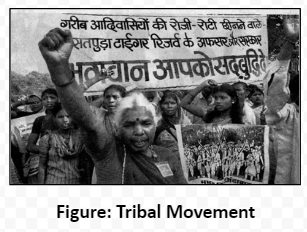![]() 12 Dec 2023
12 Dec 2023
Tribal movements are prominently located in the ‘tribal belt’ of middle India, encompassing tribal groups like the Santhals, Hos etc., which raised the concerns of tribal people.
There are two major regions in India related to tribal movement i.e. Chotanagpur region and North-eastern region.
While various tribal groups across the country share common issues, the distinctions between them are equally significant. Each tribe’s unique identity and challenges contribute to the diversity of tribal movements.

<div class="new-fform">
</div>